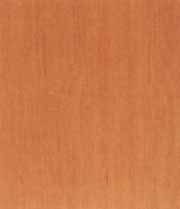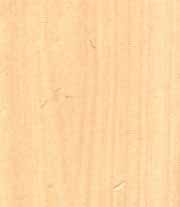Types of Timber and Wood from Australia, New Zealand, Pacific Islands for Interior Decoration
Characteristics of Timber and Wood from Australia, New Zealand and the Pacific Islands
Fijian Kauri
– Softwood
– Very large Tree (same family as New Zealand Kauri)
– Native to Fiji
– Heartwood is pale cream to golden brown and is non durable
– Sapwood is straw to pale brown with visible flecks
– Fine texture, usually straight grained
– Not very strong
– Looks very similar to New Zealand Kauri
Uses – Doors, turning, panelling, mouldings, high quality furniture
Black Butt
– Species of Eucalyptus cut for timber in Australia
Ironbark
– Any Eucalyptus tree with a hard solid bark, valued for its wood
Jarrah
– Hardwood
– Native of Western Australia
– Dark red / burgundy colored timber
– Weather resistant
– Eucalyptus species
Tallowwood
– Native of Australia
– Hardwood
– Pale yellow brown timber colour
– Eucalyptus species
– Very hard greasy durable timber
Rimu (Red Pine)
– Softwood
– Tall tree 35-60m
– Native to New Zealand
– Heartwood is reddish brown color and is moderately durable
– Sapwood is an even pale brown color (non durable and prone to insect attack)
Uses – Building Grade – construction, Appearance Grade – high quality joinery, furniture and fittings (now only available in recyclable format)

Pale Rimu
Kahikatea (White Pine)
– Tallest New Zealand Native Tree 60m max height
– Softwood
– Native to New Zealand
– Heartwood is yellow/ bright yellow and is moderately durable when treated
– Sapwood is pale white and very susceptible to insect attack
– Most perishable native timber
– Odourless timber (can be used in food areas)
– Fine grain
– Soft and easily worked
– Grows naturally very clear timber
– Long clear boards available
– Dressing grades, rusticated weatherboards available
Kauri
– Average height 30m with a large girth
– Native to New Zealand
– Softwood
– Sapwood is nondurable and a light brown color
– Speckle in timber, pepper like appearance characteristics
Uses – multipurpose but restricted to high quality furniture due to its availability. Was previously used for flooring, weatherboards, sarking, and framing. Some second growth timber is available and a lot of recycled timber. Swamp kauri is another main source, submerged for over 40,000 years.
Matai
– Softwood
– Native to New Zealand
– Strong Tree up to 25m in height
– Heartwood is straw yellow to chestnut, darkens to a deep red (non durable)
– Sapwood is white and is susceptible to insect attack
– Straight grained timber with a fine even texture
Uses – joinery, furniture
Rewa Rewa (Honeysuckle)
– Hardwood
– Native to New Zealand
– Tall tree to 30m in height
– Heartwood is a dark reddish to purple brown (non durable)
– Sapwood is silvery pinkish brown (non durable)
– Very prominent medullary rays when quarter sawn making it easily identified
– Tough and hardwearing
Uses – mostly craft as low supply available
Tawa
– Hardwood
– Native to New Zealand
– Heartwood is bright creamy brown (in large trees it can be dark brown to black)
– Strong but non durable
– Medium tree, 20-25m in height with willow like foliage
– Sapwood is very light, almost white in color, non durable
– High yield of finishing grade timber
Uses – very useful for furniture, joinery, doors, drawers, bench tops, wooden knobs.

New Zealand Tawa
Totara
– Softwood
– Native to New Zealand
– Tall tree – massive 30-50m in height
– Very durable heartwood (can be put in the ground untreated)
– Even red brown color
– Sapwood is a pale brown color and susceptible to insect attack
– Brittle timber, not strong
– Soft, straight grained, fine even textured timber
– Availability – high quality dressed grades
– Care is required when finishing due to natural oils in the timber
Silver Beech
– Hardwood
– Native to New Zealand
– Medium to large tree
– Heartwood is brownish pink and is moderately durable
– Sapwood is light greyish pink and is non durable
– Mainly dressing and appearance grades available
Uses – cabinet making, dowels, brush ware handles
Red Beech
– Hardwood
– Native to New Zealand
– Large evergreen tree 30m high
– Heartwood is durable and light to medium red brown in color
– Sapwood is susceptible to insect attack
Uses – similar to silver beech
Hard Beech
– Hardwood
– Native to New Zealand
– Large 25-35m high tree
– Heartwood is straw to light brown in color and is durable
– Sapwood is lighter than heartwood and susceptible to insect attack
Uses – structural bridge beams, form uses
For more on Interior Design and Decorating Interior Finishes – Types of Timber and Wood select from below.
